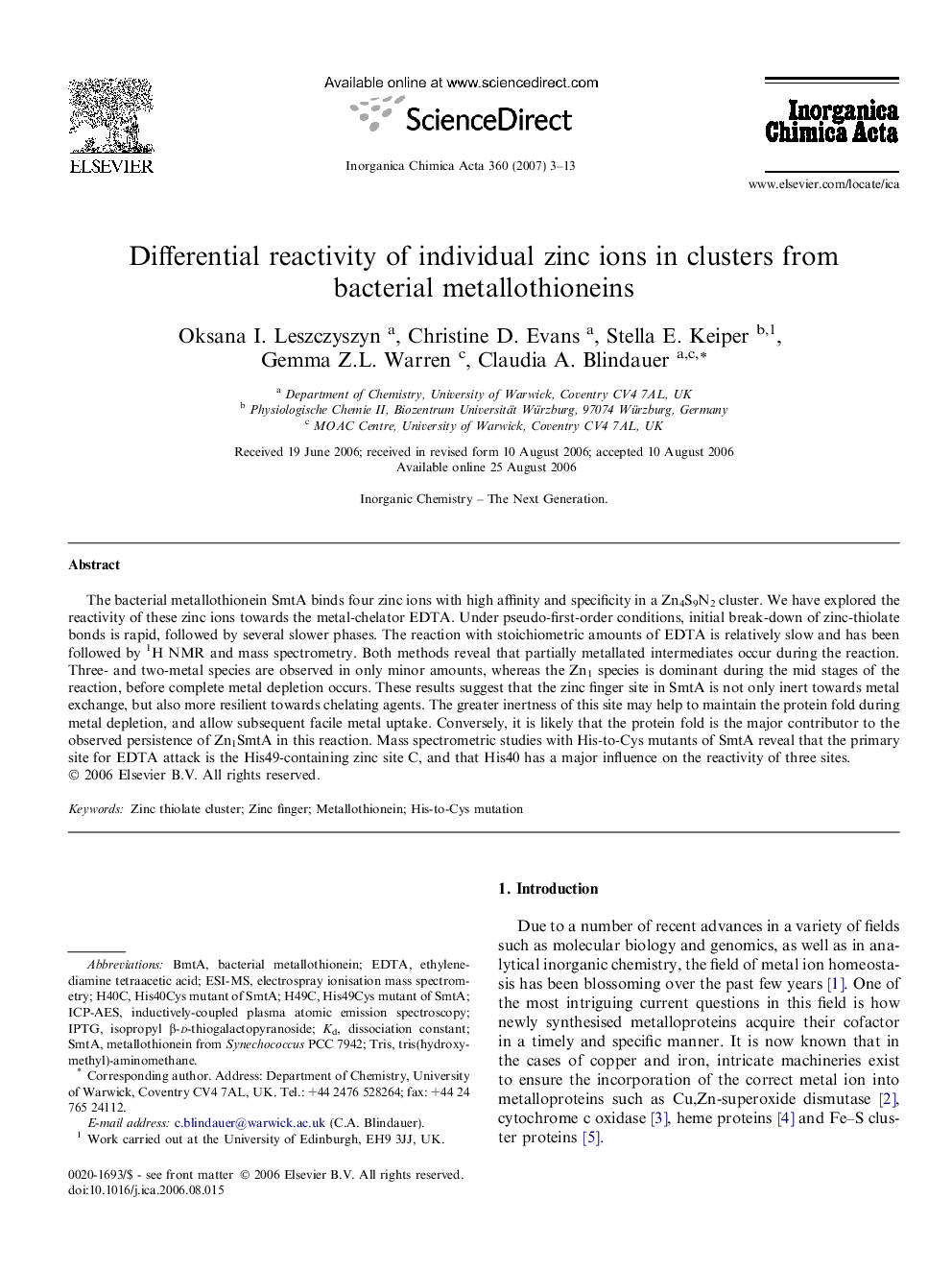| Article ID | Journal | Published Year | Pages | File Type |
|---|---|---|---|---|
| 1310818 | Inorganica Chimica Acta | 2007 | 11 Pages |
The bacterial metallothionein SmtA binds four zinc ions with high affinity and specificity in a Zn4S9N2 cluster. We have explored the reactivity of these zinc ions towards the metal-chelator EDTA. Under pseudo-first-order conditions, initial break-down of zinc-thiolate bonds is rapid, followed by several slower phases. The reaction with stoichiometric amounts of EDTA is relatively slow and has been followed by 1H NMR and mass spectrometry. Both methods reveal that partially metallated intermediates occur during the reaction. Three- and two-metal species are observed in only minor amounts, whereas the Zn1 species is dominant during the mid stages of the reaction, before complete metal depletion occurs. These results suggest that the zinc finger site in SmtA is not only inert towards metal exchange, but also more resilient towards chelating agents. The greater inertness of this site may help to maintain the protein fold during metal depletion, and allow subsequent facile metal uptake. Conversely, it is likely that the protein fold is the major contributor to the observed persistence of Zn1SmtA in this reaction. Mass spectrometric studies with His-to-Cys mutants of SmtA reveal that the primary site for EDTA attack is the His49-containing zinc site C, and that His40 has a major influence on the reactivity of three sites.
Graphical abstractThe hybrid metallothionein/zinc finger SmtA, a protein from cyanobacteria, reacts with EDTA in a multiphasic ligand exchange reaction. The coordinating histidine residues tune the reactivity of the zinc ions. One particular site in the cluster is the prime target for competing ligands, and the zinc finger site is considerably less reactive than the other three metal ions.Figure optionsDownload full-size imageDownload as PowerPoint slide
